Delicious Minnesota Lefse Recipe for Your Next Meal!
Welcome to my Minnesota Lefse recipe! If you’re looking for a unique and delicious flatbread to add to your recipe collection, you’ve come to the right place. Lefse is a traditional Norwegian potato flatbread that has become a staple in many Scandinavian households, especially in Minnesota.
I learned how to make lefse from my grandmother, who was born and raised in Norway. Her recipe has been passed down through our family for generations, and I’m excited to share it with you today.
Lefse is a labor of love, but the end result is well worth the effort. It’s soft, chewy, and slightly sweet, with a delicate potato flavor. It’s perfect for breakfast, lunch, or dinner, and it pairs perfectly with a variety of toppings.
So, let’s get started! In this article, I’ll walk you through the process of making the best lefse you’ve ever tasted. From the ingredient list to the step-by-step instructions, I’ll show you how to make perfect lefse every time. So, put on some Scandinavian music, grab your lefse griddle, and let’s get cooking!
Why You’ll Love This Recipe
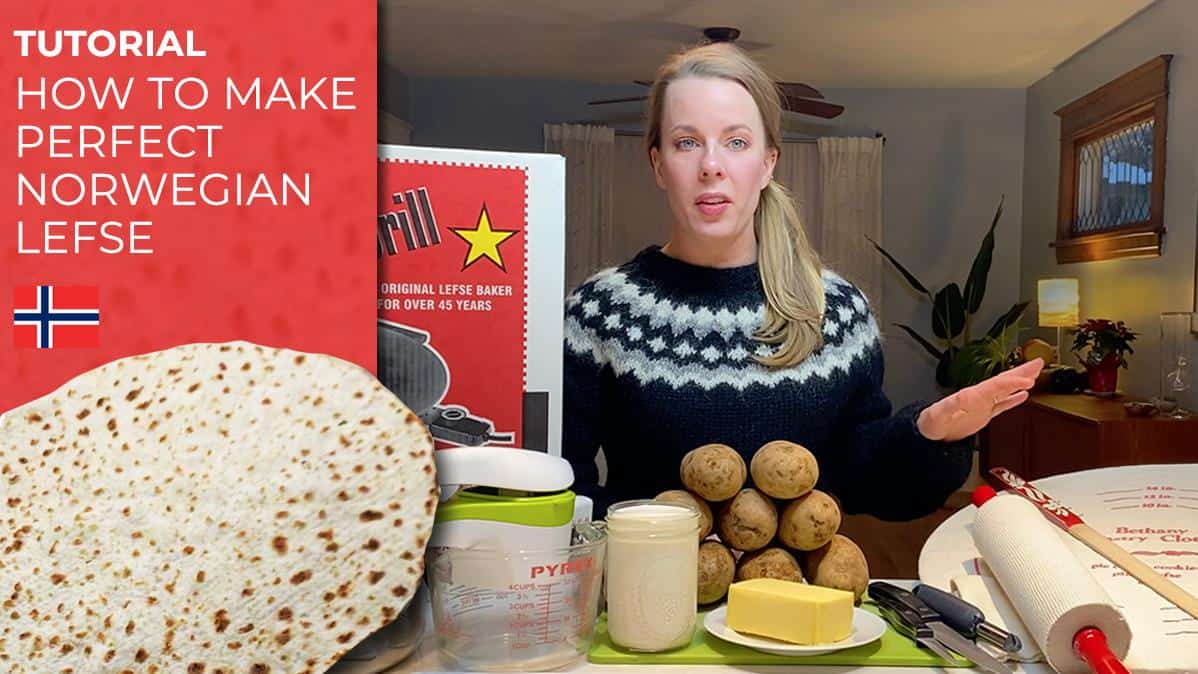
Are you a fan of Scandinavian cuisine? Or have you ever tried Norwegian Lefse and fell in love with its soft and chewy texture? Look no further, I have the perfect recipe for you – the Minnesota Lefse recipe.
This recipe is a traditional potato flatbread that is a staple in Norwegian and Scandinavian households. But what sets the Minnesota Lefse apart is the addition of heavy cream, making it extra soft and fluffy. It’s also easy to make, and you don’t have to be an expert in the kitchen to whip up a batch.
But what truly makes this recipe special is the memories and traditions that come along with it. For many families, making lefse is a cherished tradition that has been passed down from generation to generation. It’s not just a food item; it’s a way to connect with your heritage and keep the memories of your ancestors alive.
Not only is this recipe delicious and easy to make, but it’s also a way to honor your heritage and create new memories with your loved ones. So why not give it a try? You’ll love the taste of this soft Norwegian potato flatbread, and the memories that come along with it.
Ingredient List
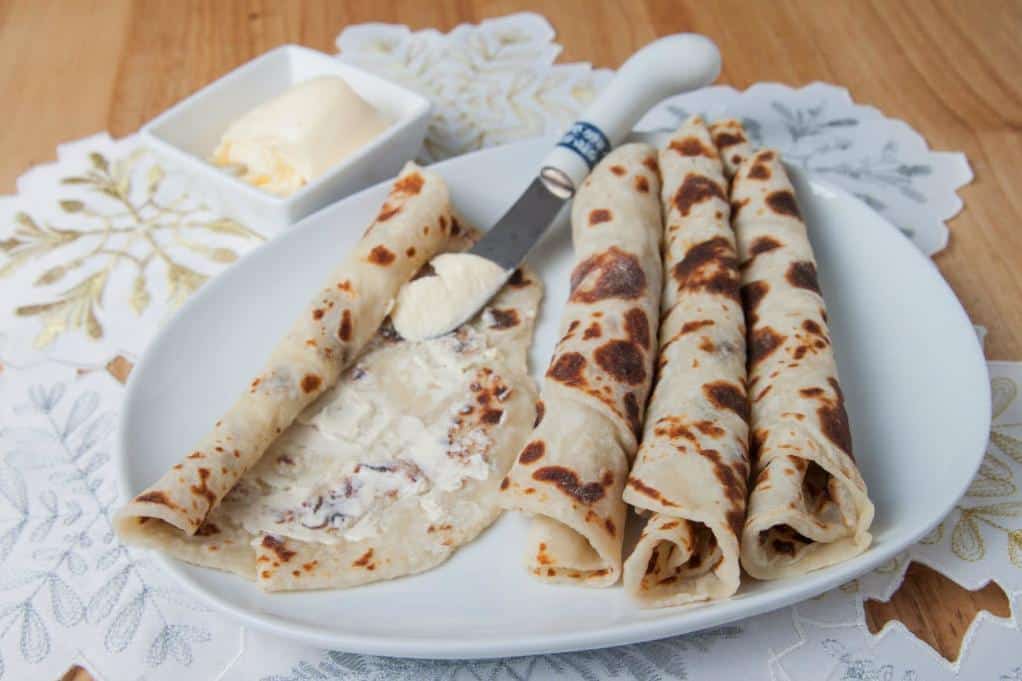
Before we dive into the recipe, let’s gather all the ingredients we need. Minnesota lefse recipe calls for a few key ingredients that are easy to obtain. You may even have some of them in your pantry or fridge already. Here’s what you’ll need:
### For the potato dough:
- 5 pounds russet potatoes, peeled and cut into chunks
- ½ cup salted butter, melted
- 1 cup heavy cream
- 1 tablespoon salt
- 1 tablespoon white sugar
- 2 cups all-purpose flour, plus more for rolling
### For serving:
- Butter, for serving
- Cinnamon and sugar, for serving
When it comes to making lefse norwegian potato flatbread, using the right ingredients is essential for achieving the best lefse possible. Don’t worry, these ingredients are easy to find and most of them are common in any household.
The Recipe How-To
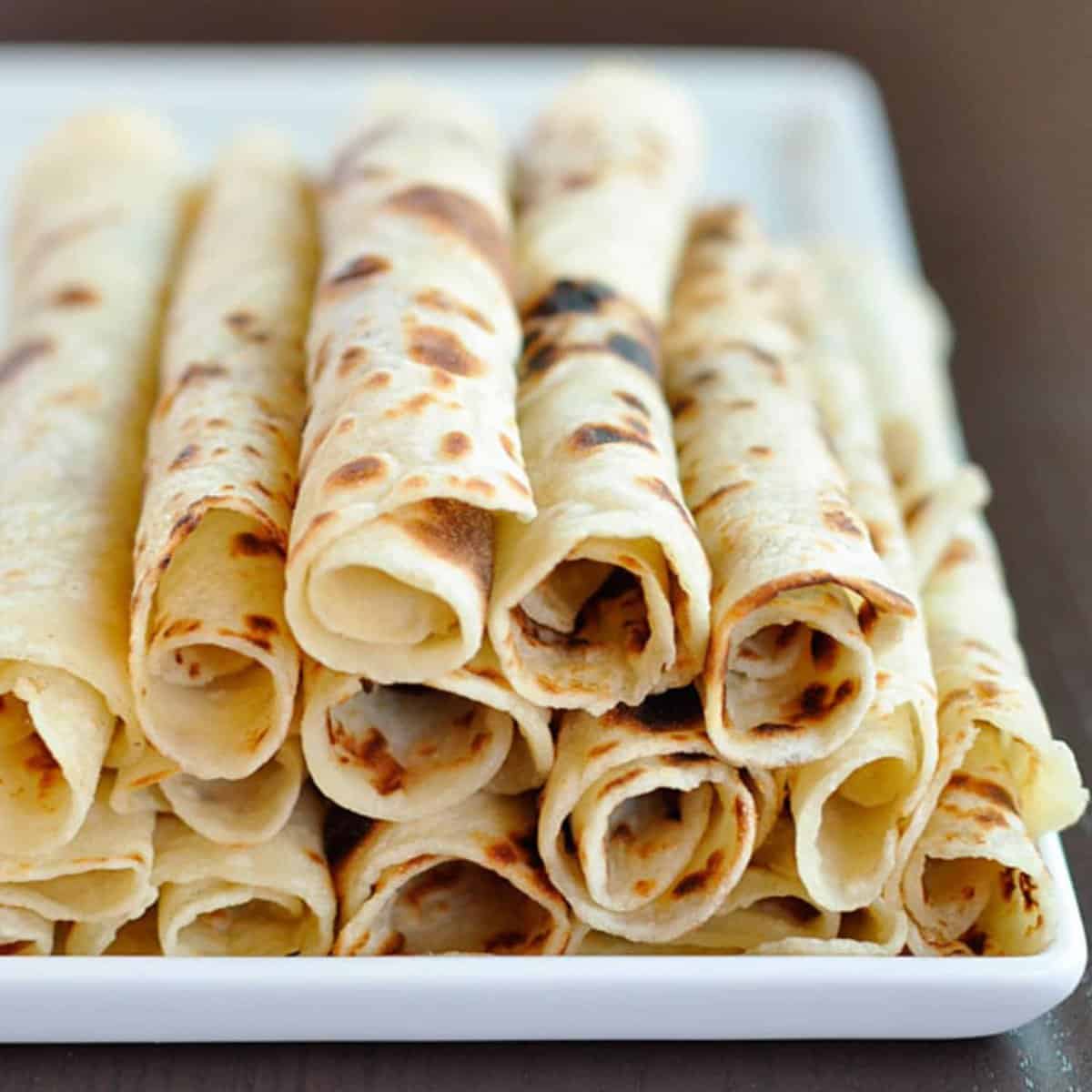
Now that we have all our ingredients ready, it’s time to start making the Minnesota Lefse. Here’s how to do it:
Step 1: Cook and mash the potatoes
Peel and boil 5 pounds of russet potatoes in salted water until they are tender, then drain them and let them cool for a few minutes. Once they are cool enough to handle, use a potato ricer to mash them into a large bowl. Mash the potatoes well, so there are no lumps. Add 1/2 cup of salted butter, 1/2 cup of heavy cream, and 1 tablespoon of salt to the bowl, and mix everything together well.
Step 2: Add flour and cream
Add 4 cups of flour and 1/2 cup of heavy cream to the potato mixture, and mix everything together until it forms a dough. Knead the dough for a few minutes until it is smooth and elastic.
Step 3: Form the lefse
Divide the dough into small balls, about the size of a golf ball. Roll each ball out into a thin, round circle, about 1/8 inch thick. Use a lefse stick to transfer the dough to a lefse griddle set at 400°F. Cook the lefse for about 1 minute on each side, until they are lightly browned.
Step 4: Store the lefse
Once the lefse are cooked, stack them on a plate with a damp towel covering them to keep them soft. If you’re making a large batch, you can store the lefse in a plastic bag in the refrigerator or freezer until you’re ready to eat them.
That’s it! Making Minnesota Lefse is easy and fun, and they taste delicious.
Substitutions and Variations
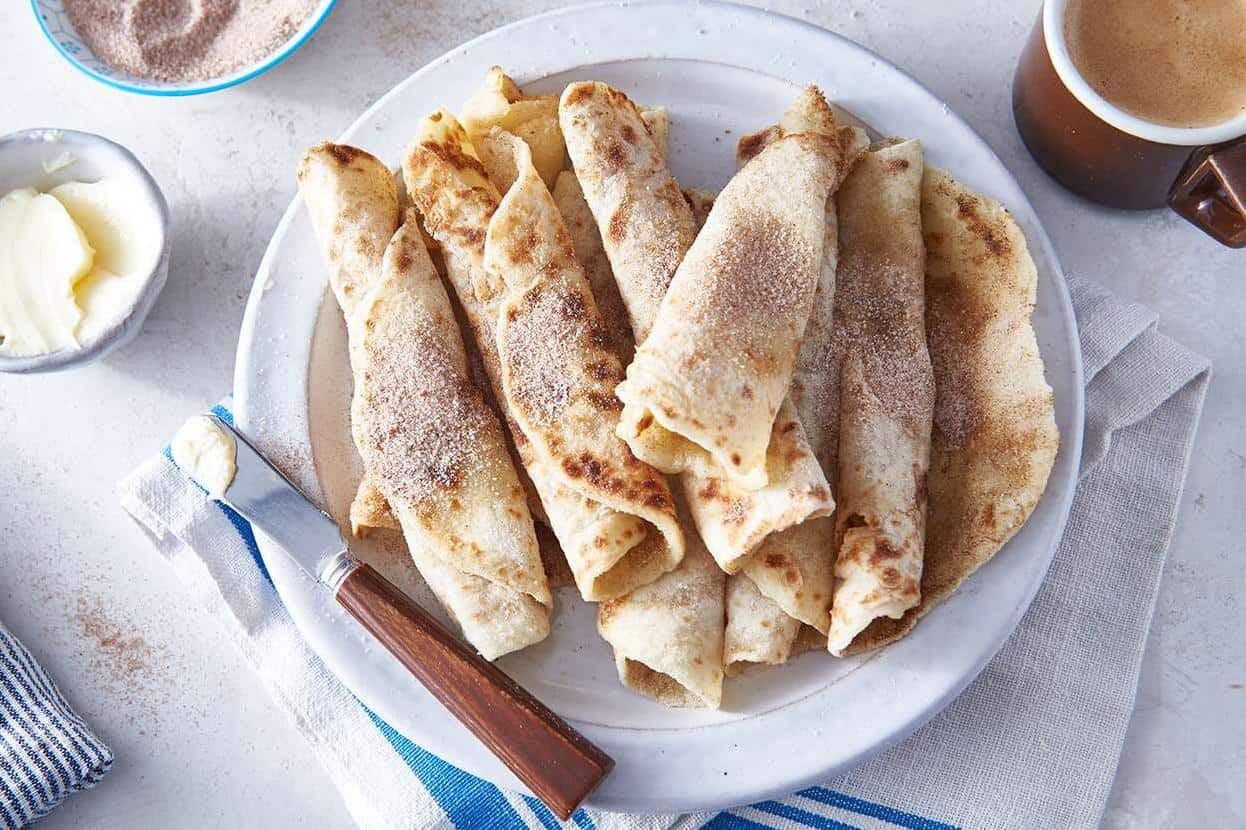
While the traditional Minnesota lefse recipe calls for the use of russet potatoes, there are a few substitutions you can make to switch things up. Instead of using russet potatoes, you can try using Norwegian potatoes or a combination of both. The Norwegian potato is a waxy variety that yields a slightly different texture and flavor compared to the russet.
If you’re looking to make a potato lefse recipe, you can swap out the mashed potatoes for riced potatoes. Ricing the potatoes involves pushing them through a potato ricer to create small, rice-like pieces. This method can give your lefse a more uniform texture and a slightly different flavor.
For those who are lactose intolerant or prefer a dairy-free option, you can replace the heavy cream with a non-dairy milk of your choice. Coconut milk or almond milk can be used as substitutes, but keep in mind that it may alter the taste slightly.
If you’re looking for a sweet twist on the traditional lefse recipe, you can add a couple of tablespoons of sugar to the dough mixture. This will give your lefse a slightly sweet flavor that pairs well with jams or fruit spreads.
Finally, for a savory option, you can add herbs and spices to the dough mixture. Try adding garlic powder or dried herbs like parsley or dill to give your lefse a flavorful kick.
Experiment with different substitutions and variations to find your perfect lefse recipe. The possibilities are endless, and the best part is that you can make it your own.
Serving and Pairing
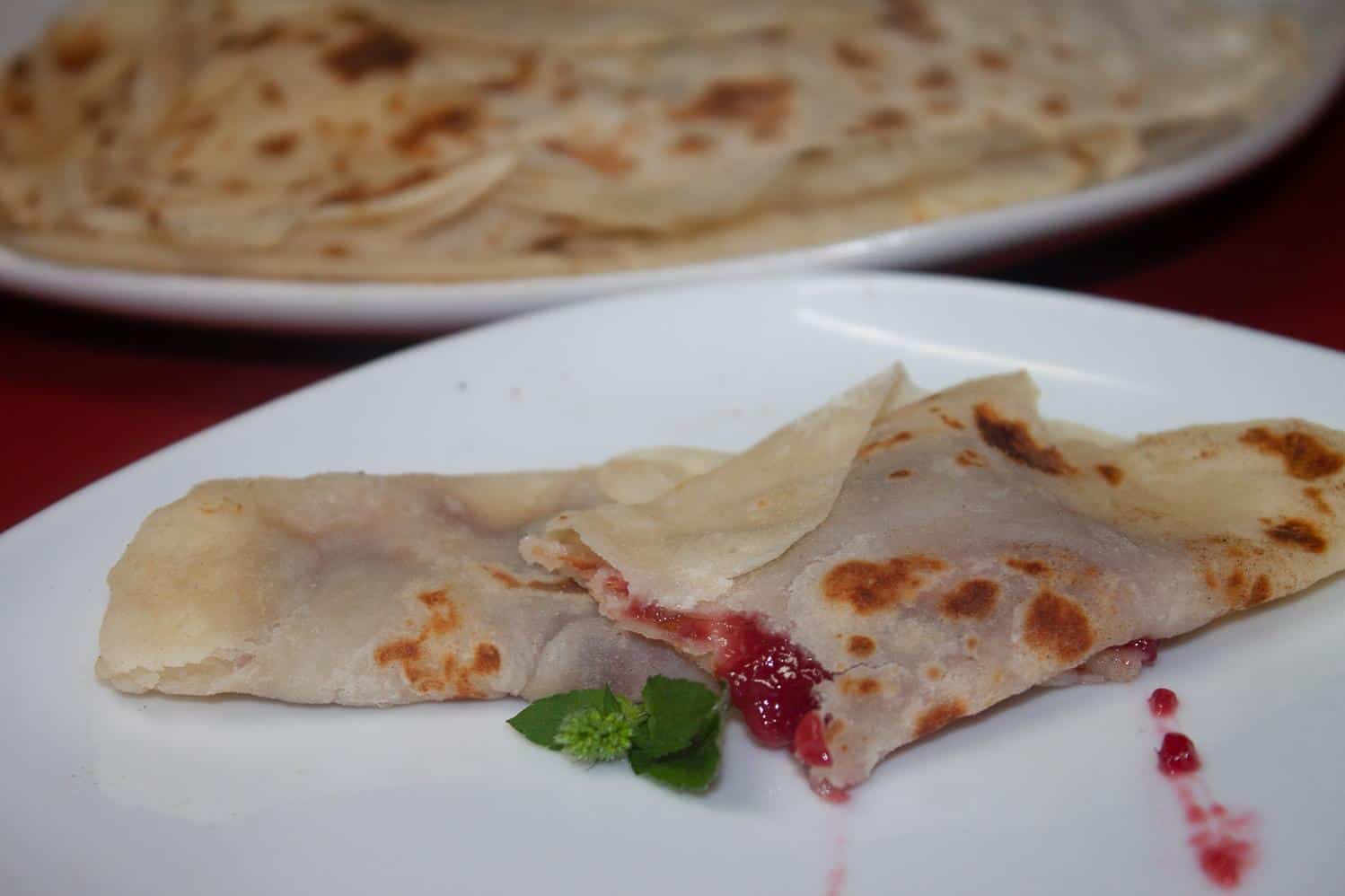
Lefse is a versatile and delicious Norwegian potato flatbread that can be served in various ways. You can enjoy it plain, rolled up with butter and sugar, or filled with savory ingredients like smoked salmon, cream cheese, and dill.
One of the traditional ways to serve lefse is to spread it with butter and sprinkle it with sugar, then roll it up tightly and slice it into bite-sized pieces. This makes it a tasty treat to enjoy with a cup of coffee, tea, or hot cocoa.
For a more substantial meal, you can use lefse as a wrap and fill it with your favorite ingredients. Some popular fillings include scrambled eggs and bacon, ham and cheese, or turkey and cranberry sauce. You can also add lettuce, tomatoes, and other veggies to make it a healthy and satisfying meal.
Lefse pairs well with many different foods and beverages. You can serve it alongside a bowl of hot soup or stew, or with a plate of smoked salmon and cream cheese. It also goes well with Scandinavian dishes like Swedish meatballs, pickled herring, and lingonberry sauce.
To enhance the flavor of your lefse, you can also pair it with a variety of drinks. Coffee and tea are popular choices, as well as hot apple cider or mulled wine during the winter months. For a refreshing summer drink, you can try serving lefse with cold lemonade, iced tea, or a crisp white wine.
No matter how you choose to serve and pair your lefse, it’s sure to be a delicious and satisfying addition to any meal or snack. So go ahead and experiment with different fillings and beverages to find your perfect combination!
Make-Ahead, Storing and Reheating
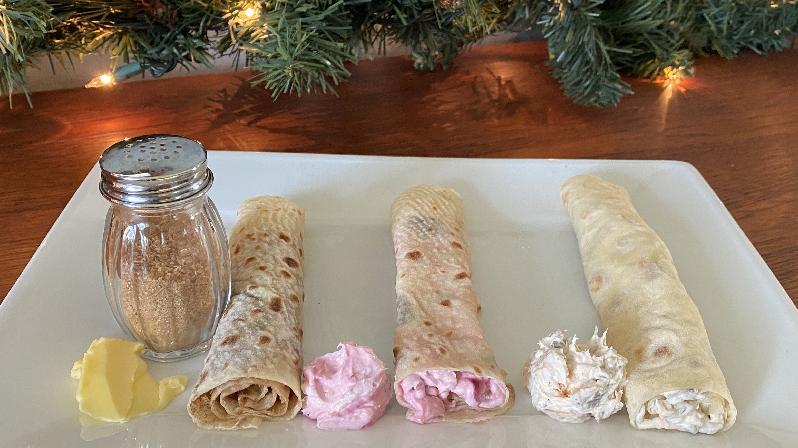
One of the great things about Minnesota Lefse is that it can be made ahead of time and stored for later use. After making the lefse, you can store them in an airtight container or plastic bag in the refrigerator for up to a week or freeze them for up to six months.
To reheat, simply place the lefse on a hot lefse griddle or in a skillet over medium heat for about 30 seconds on each side. If you don’t have a lefse griddle, you can also use a regular flat griddle or skillet.
If you want to make the lefse ahead of time, you can roll out the dough and cook them up to a day before you plan to serve them. Once they have cooled, stack them with sheets of wax paper in between each lefse and store them in an airtight container or plastic bag in the refrigerator.
When you’re ready to serve, simply reheat the lefse as mentioned above and they’ll be just as soft and delicious as if you had made them fresh.
It’s important to note that as the lefse sits, it may become a bit drier and less pliable. If this happens, you can brush them with a bit of melted butter or sprinkle them with water to soften them up before reheating.
Overall, Minnesota Lefse is a great recipe to make ahead of time and store for later use. With a little bit of planning, you can have delicious homemade lefse whenever you want!
Tips for Perfect Results

Making lefse is a skill, and like any skill, it takes practice to perfect. However, with a few tips and tricks, you can ensure that your Minnesota lefse turns out soft, pliable, and delicious every time. Here are some tips to help you make the best lefse possible:
1. Use the right potatoes: The type of potato you use to make your mashed potatoes is crucial to the success of your lefse. Russet potatoes work best because they have a high starch content, which helps create a softer and more pliable dough. Be sure to peel and cook the potatoes until they are tender, and then mash them until they are completely smooth.
2. Measure your ingredients accurately: Lefse dough is very finicky and requires precise measurements. Use a digital kitchen scale to weigh your ingredients, especially the flour. This will ensure that your dough has the perfect consistency and won’t be too dry or too sticky.
3. Let the dough rest: After mixing the dough, let it rest for at least 20 minutes at room temperature. This will allow the flour to absorb the moisture from the mashed potatoes and the heavy cream, resulting in a more pliable and easier-to-roll dough.
4. Keep the dough soft: Lefse dough should be soft and pliable, not dry or stiff. To prevent the dough from drying out, cover it with a damp towel or plastic wrap while you are rolling out the lefse. You can also sprinkle a little bit of water on the dough if it starts to feel dry.
5. Use a lefse stick: A lefse stick is a long, thin wooden stick that is used to transfer the lefse from the rolling surface to the griddle. It is an essential tool for making lefse, as it helps prevent the dough from tearing or stretching. If you don’t have a lefse stick, you can use a thin spatula instead.
6. Keep the griddle at the right temperature: The griddle should be heated to 400°F before you start cooking the lefse. Use an infrared thermometer to ensure that the temperature is accurate. If the griddle is too hot, the lefse will burn, and if it’s too cool, the lefse will dry out and become tough.
7. Don’t overcook the lefse: Lefse should be cooked for about 1-2 minutes on each side, or until it is lightly browned and has a few small bubbles. Overcooking the lefse will make it dry and tough, so keep a close eye on it while it’s cooking.
By following these tips, you’ll be able to make perfect Minnesota lefse every time. Don’t be discouraged if your first few attempts don’t turn out as expected; making lefse takes practice and patience. Keep trying, and soon you’ll be able to enjoy delicious homemade lefse that will impress your friends and family.
Bottom Line
In conclusion, if you’re looking for a recipe that is sure to impress your family and friends, then look no further than this Minnesota Lefse Recipe. This traditional Norwegian potato flatbread is a labor of love, but the end result is well worth the effort. With simple ingredients like mashed potatoes, flour, salt, sugar, and butter, you can create a soft, delicious, and versatile lefse that can be enjoyed on its own or paired with a variety of toppings.
By following the instructions and tips provided in this article, you can make perfect lefse every time. From making the dough to cooking on a lefse griddle, this recipe has everything you need to know to create an authentic Scandinavian delicacy that is sure to become a family favorite.
So why not give it a try? Whether you’re of Norwegian descent or simply love trying new cooking recipes, making your own homemade lefse is a fun and rewarding experience. So gather your ingredients, roll up your sleeves, and let’s make some lefse!
Minnesota Lefse Recipe

We love this with butter, cinnamon, and sugar. So good! After moving away from Minnesota, I can’t just buy lefse at the grocery store, so when I get a craving I resort to making it this way.
- 5 cups mashed potatoes (or riced)
- 1/2 cup cream
- 3 tablespoons melted butter
- 2 1/2 cups flour
- salt
- Mix potatoes and cream well.
- Add melted butter, flour, and salt and mix well.
- Roll out a small piece at a time into a circle as thin as possible.
- Fry until lightly browned, turn and brown other side.
[custom-related-posts title=”Recommended Recipes Just For You” none_text=”None found” order_by=”date” order=”ASC”]
